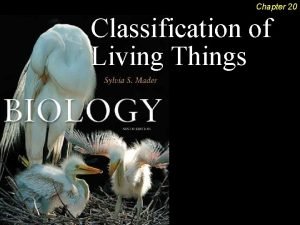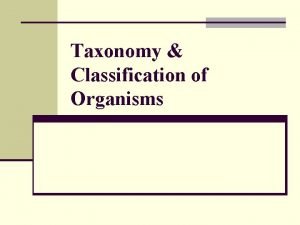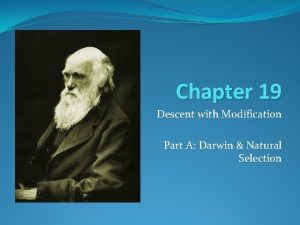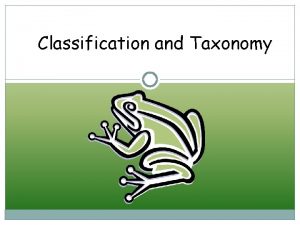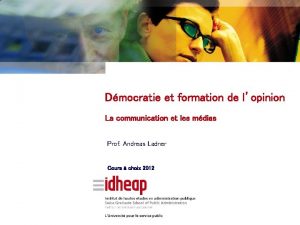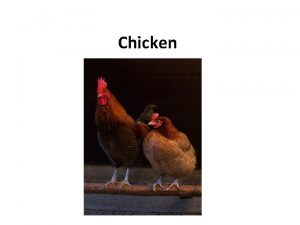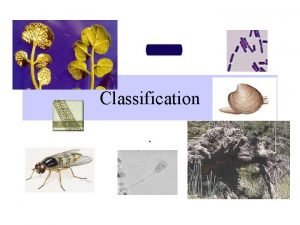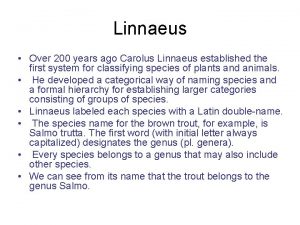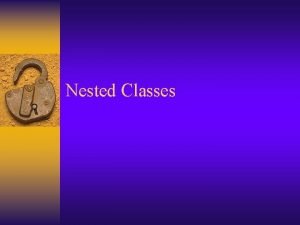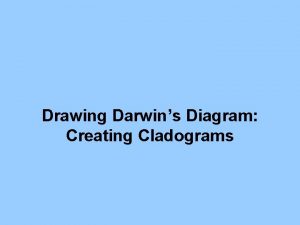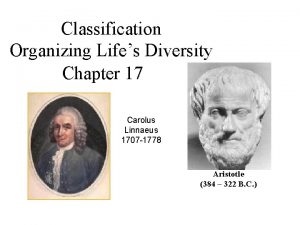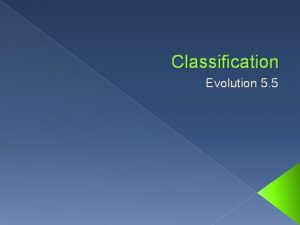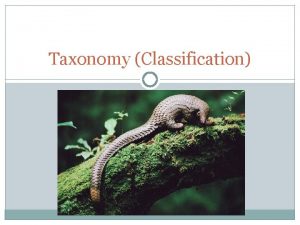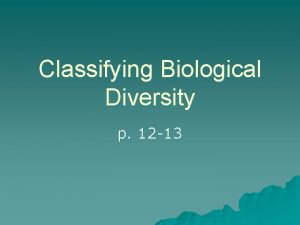Nested Hierarchies the Order of Nature Carolus Linnaeus













- Slides: 13


Nested Hierarchies, the Order of Nature: Carolus Linnaeus • Swedish Naturalist • Influenced by Aristotle’s “Great Chain of Being” • Linnaeus’ Artificial System of Classification • “All for the Glory of Go. D”

Nested Hierarchies, the Order of Nature: Carolus Linnaeus • Systema Naturae (1735) • Polynomial Name to Binomial Name (Genus specific epithet) • Species-Genus-Family-Order. Class- Division/Phylum-Kingdom

The Ecology of Human Populations: Thomas Malthus • Population Growth vs. Food Supply • An Essay on the Principle of Population as it Affects the Future Improvement of Society(1798) Between 1800 and 2000 the human population increased about six-fold. Has the food supply kept pace? Will there be enough food to support the projected population of 9. 2 billion in 2050?

Early Concepts of Evolution: Jean Baptiste Lamarck • French Naturalist • Species changed over time into new species via natural processes • Lamarckian Theory of Evolution: Theory of Use and Disuse and Theory of Acquired Inheritance Ladder Type Evolution

Extinctions & Paleontology: Georges Cuvier • Catastrophist • Fossils became popular • “Some species had actually vanished from the face of the earth”, and so EXTINCTION • Cuvier was a legendary anatomist • Mass extinction

Uniformitarianism: Charles Lyell • Gradualism(James Hutton )+ added ideas= uniformitarianism • Geological processes operating in the past are still operational today! • The Earth is old!

Discrete Genes Are Inherited: Gregor Mendel • Science of Heredity using garden peas • 22 pea varieties using 7 character traits • Blending inheritance vs. laws of heredity • Mendel’s work goes unrecognized even Darwin himself • 15 years have to wait before scientists realized the answer to one of life’s greatest mysteries! • “Father of Genetics”

Natural Selection: Charles Darwin & Alfred Russel Wallace • The Origin of Species by Means of Natural Selection or the Preservation of Favored Races in the Struggle for Life” (1859) • First Synthetic Theory of Evolution • Pressure of population growth by Malthus is applicable to other organisms

Natural Selection: Charles Darwin & Alfred Russel Wallace Darwin’s Finches • Selection of Traits: key to survival in all struggling organisms in a finite environment • Wallace and Darwin maintained correspondence • A joint paper was published at the Linnaean Society of London • Darwin and Wallace developed similar theory, but Darwin amassed more evidences and published a book.

Rediscovering the Laws of Heredity: de Vries, Correns, and Tschermak De Vries Tschermak Correns

DNA, the Language of Evolution: Francis Crick & James Watson Francis Crick • Life was encoded in GENES • DNA structure was inferred from a top view X-ray • Life’s Cookbook • Mutation as the raw material of EVOLUTION was well understood with the dawn of the DNA molecule

Reference: • Understanding Evolution. University of California Museum of Paleontology
 Living things 20
Living things 20 Homologous structures
Homologous structures Carolus linnaeus
Carolus linnaeus Taxonomy pogil
Taxonomy pogil Broadest level of classification
Broadest level of classification Uli windisch
Uli windisch Master handelswetenschappen (antwerpen)
Master handelswetenschappen (antwerpen) Carl linnaeus animal kingdom
Carl linnaeus animal kingdom Linnaeus system of classification is
Linnaeus system of classification is Carl linnaeus
Carl linnaeus Linnaean classification system
Linnaean classification system Chicken classification
Chicken classification Jackal linnaean system
Jackal linnaean system Now you try clipart
Now you try clipart
